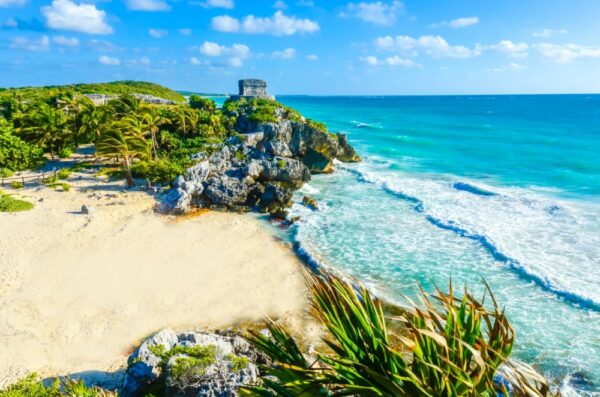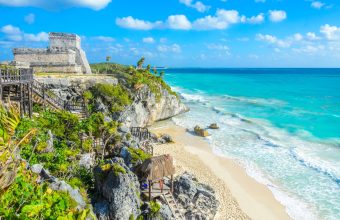Mexico’s Best Maya Ruins
An essential guide to visiting Mexico's Maya archeological sites
The Maya world was vast, spanning from southern Mexico all the way to El Salvador and northern Honduras.
There are around 70 different Maya archaeological sites open to the public in Mexico alone and likely hundreds if not thousands more un-excavated or still hidden. The earliest Maya settlement, found in Belize, dates back to 2500 BCE, indicating that the Maya civilisation evolved over at least three and half thousand years, developing 30 different languages and various architectural periods and styles.
The Maya are renowned for their prowess in mathematics and astronomy, with their invention of the number zero—independent to that of Mesopotamia—and a complex calendar informed by their knowledge of the movement of the celestial bodies.
Aesthetically, they found beauty in gemstone-studded teeth, crossed-eyes (estropia) and elongated heads and this can be noticed in the glyphs and sculptures found at the archeological sites. Babies’ skulls were bound with boards to alter their shape and a ball was hung between their eyes to create a centrally focused gaze.
Exploring the ruins and sites of the Maya world, visitors will start to distinguish structures from the different eras and architectural styles. With time it also becomes easier to recognise the pantheon of gods that make up the Maya cosmology honoured across the Maya world.
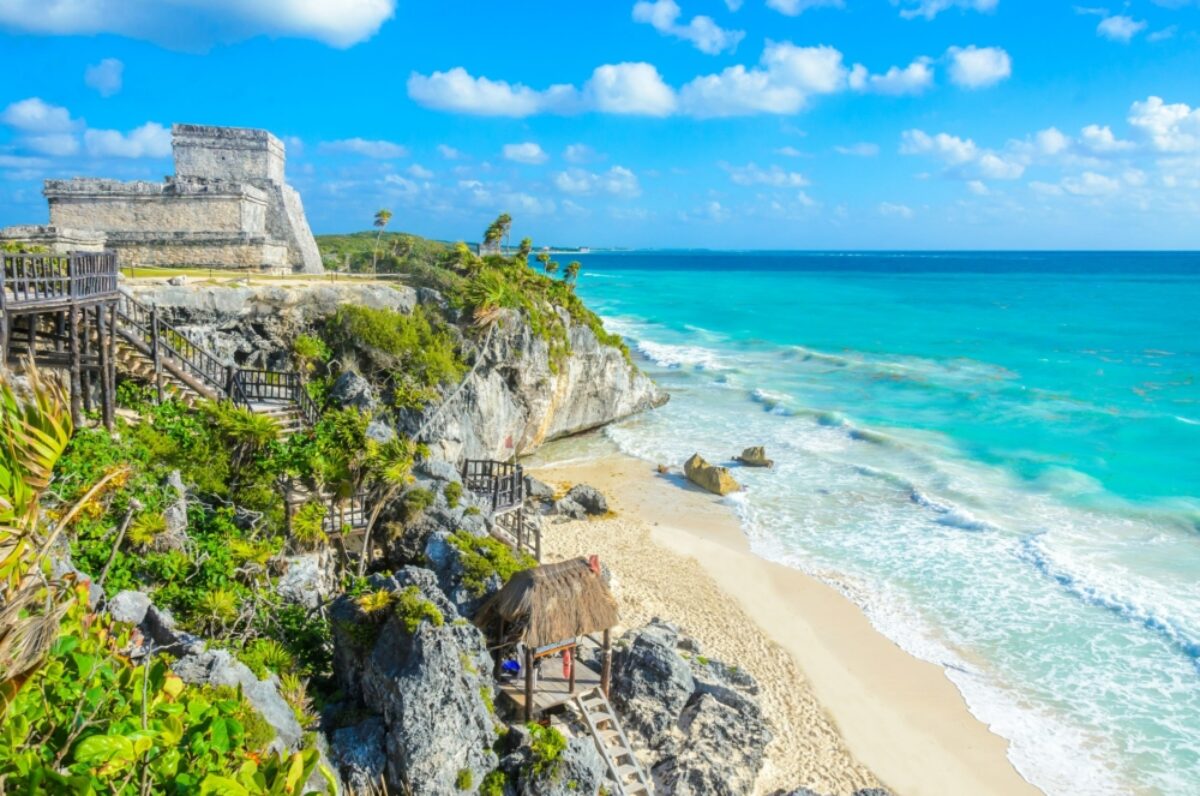
Set against a backdrop of the Caribbean sea, Tulum is one of Mexico's most photogenic Maya sites
Mexico’s best & most important Maya ruins
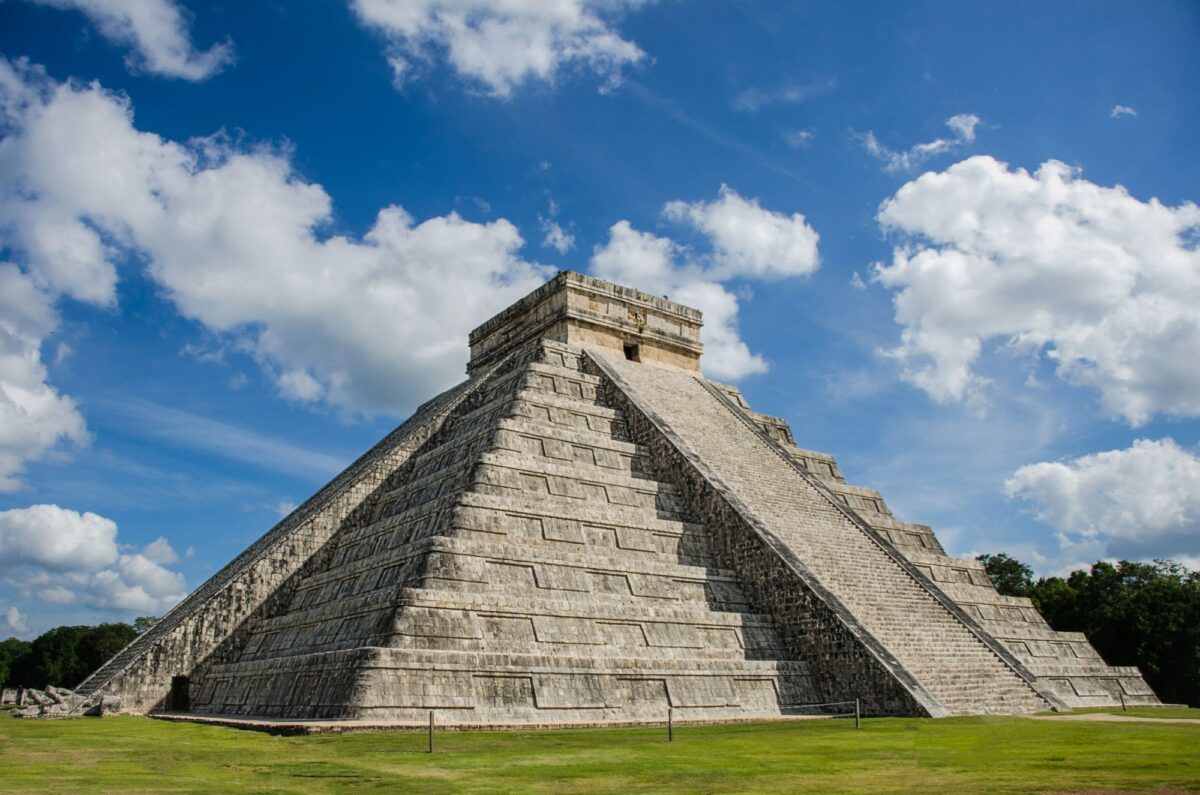
Probably the most recognisable Maya site: Chichén Itzá's Temple of Kukulkán
Chichén Itzá
The most iconic and instantly recognisable of all Mexico's Maya archeological sites. Chichén Itzá’s ceremonial, cultural and administrative centre sprawls out over 2.5 square miles, its edifices aligned with celestial bodies. Within this same area, there were sacred sinkholes (cenotes), where sacrifices to the rain god Chaac were made to ensure that life-giving water was always abundant.
Today, almost 1.5 million visitors flock to the site each year. The excavated structures and the pristine nature of this archaeological site have been part of the allure, as well as its proximity to tourist hubs like Cancun and Playa del Carmen. The stories that the city holds, and the displays of Maya astrological and architectural prowess make it a noteworthy stop.
Read more: Visiting Chichén Itzá
Suggested itinerary:

Prime real estate: Tulum with its view over Paradise Beach
Tulum
Located 80 miles south of Cancun and set against a stunning backdrop of the Caribbean sea, Tulum is one of Mexico’s most photogenic archaeological sites. Tulum’s most well-known structure is known as El Castillo (the Castle) and sits high up, overlooking the sea. Make time to check out the Temple of the Frescoes which houses murals depicting Maya gods and religious motifs that still retain their original colour—an impressive feat given the wind, rain and sunshine to which they have been exposed.
Read more: Visiting Tulum
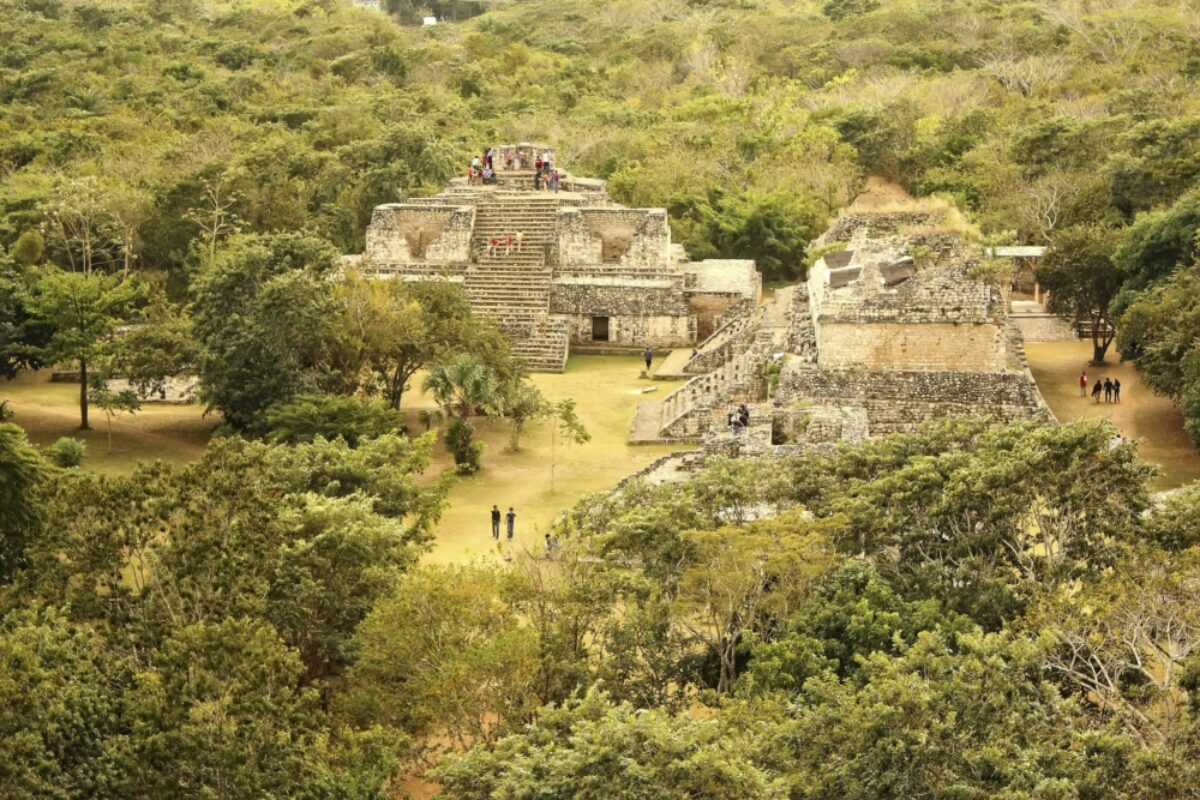
Maya history without the crowds at Ek Balam
Ek Balam
Those who prefer to explore archaeological sites without the crowds—or those looking for an alternative site to Chichén Itzá—should make time to visit Ek Balam.
Here, unlike at some of the more popular sites in the region, you are allowed to climb the pyramids and get up close and personal with the structures while taking in the impressive views from the top.
Read more: Visiting Ek Balam
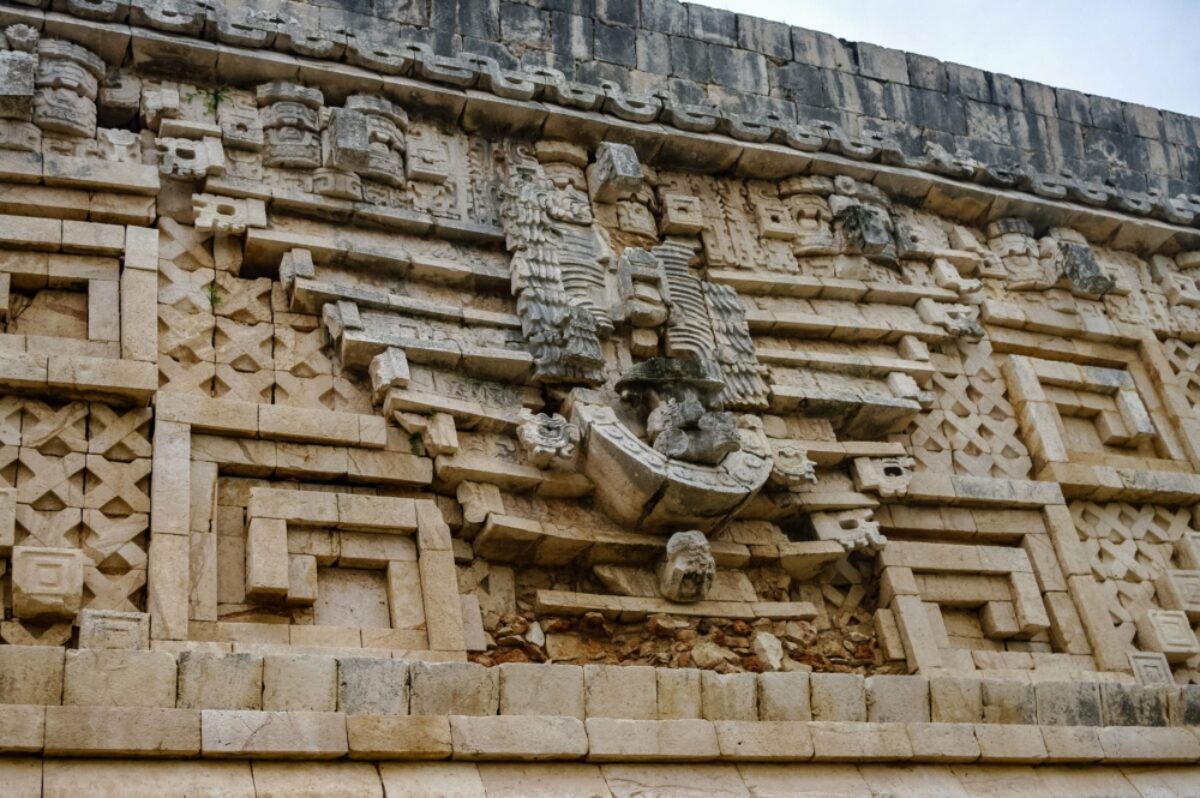
Uxmal is famous for its intricate details and stonework
Uxmal
Known for its rotund structures, the World Heritage site of Uxmal is steeped in myths and legends. But what really marks Uxmal out is its Maya artwork. The Governor’s Palace is covered in stone mosaics of serpents, astronomical symbols and depictions of ancient gods.
Read more: Visiting Uxmal
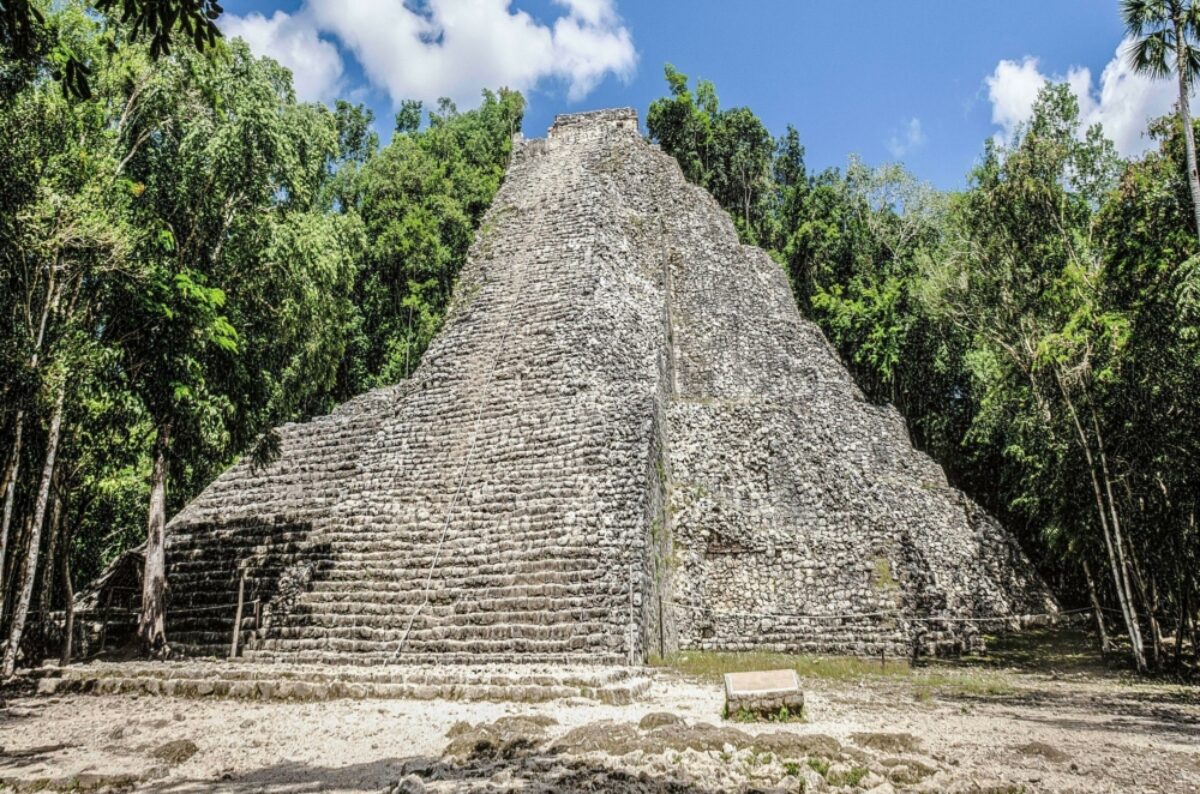
The Nohoch Mul pyramid at Cobá
Cobá
This ancient city, which saw its peak between 200 and 600 BCE (before Chichén Itzá became more powerful), is so large that it is best explored by bike or tricycle taxi.
You will cycle down road networks called Sacbes, created by the Maya to reach different parts of this vast city, visiting well-preserved ball courts and large glyphs that remain in place. If you can brace yourself for the steep climb up the 1200 steps of the Nohoch Mul pyramid you will be rewarded with incredible views over the site and the jungle surrounding it
Read more: Visiting The Ruins At Cobá
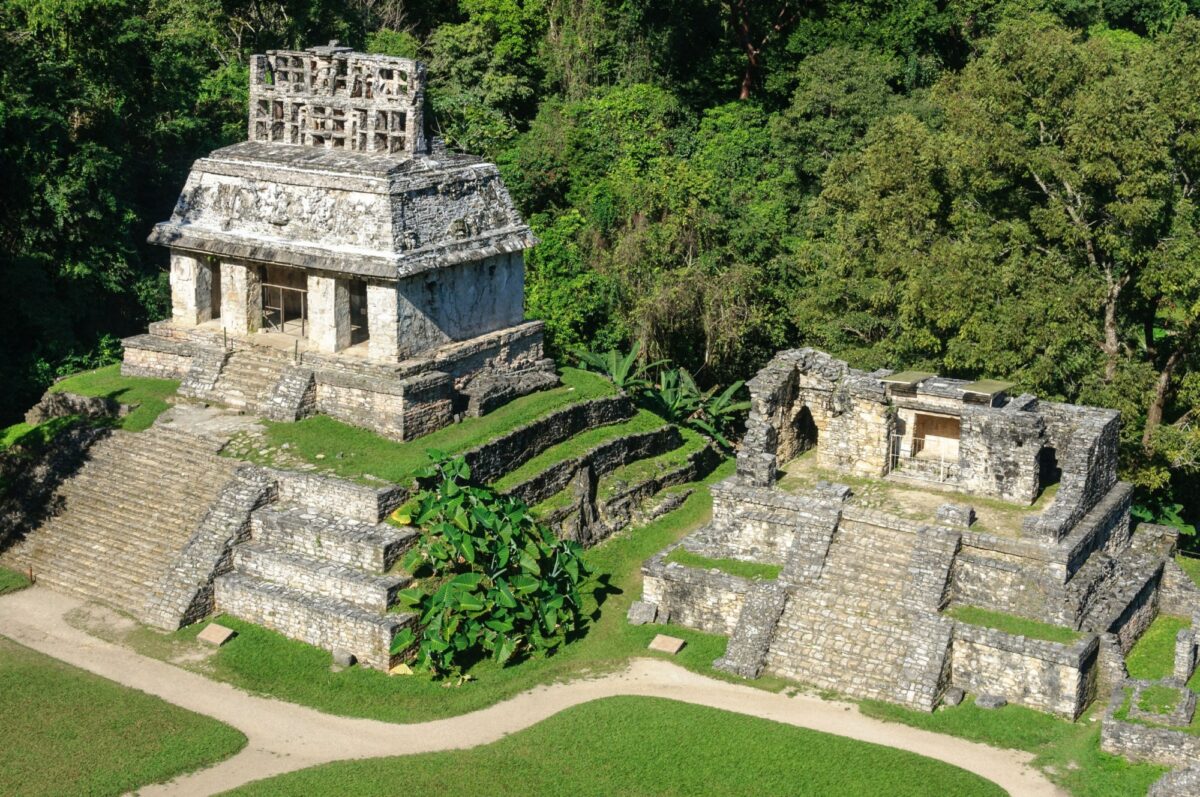
Palenque, known for its important hieroglyphs
Palenque
Located in the tropical lowlands of Mexico’s southern state of Chiapas, Palenque was an important seat of power during the Classic Maya period, seeing its peak between 226-799 C.E.
Palenque’s hieroglyphs, particularly on the aptly-named Temple Inscriptions, are some of the best sources of information about Maya life. They tell of everything from trade, war and even marital bonds between different cities.
Read more: Visiting Palenque
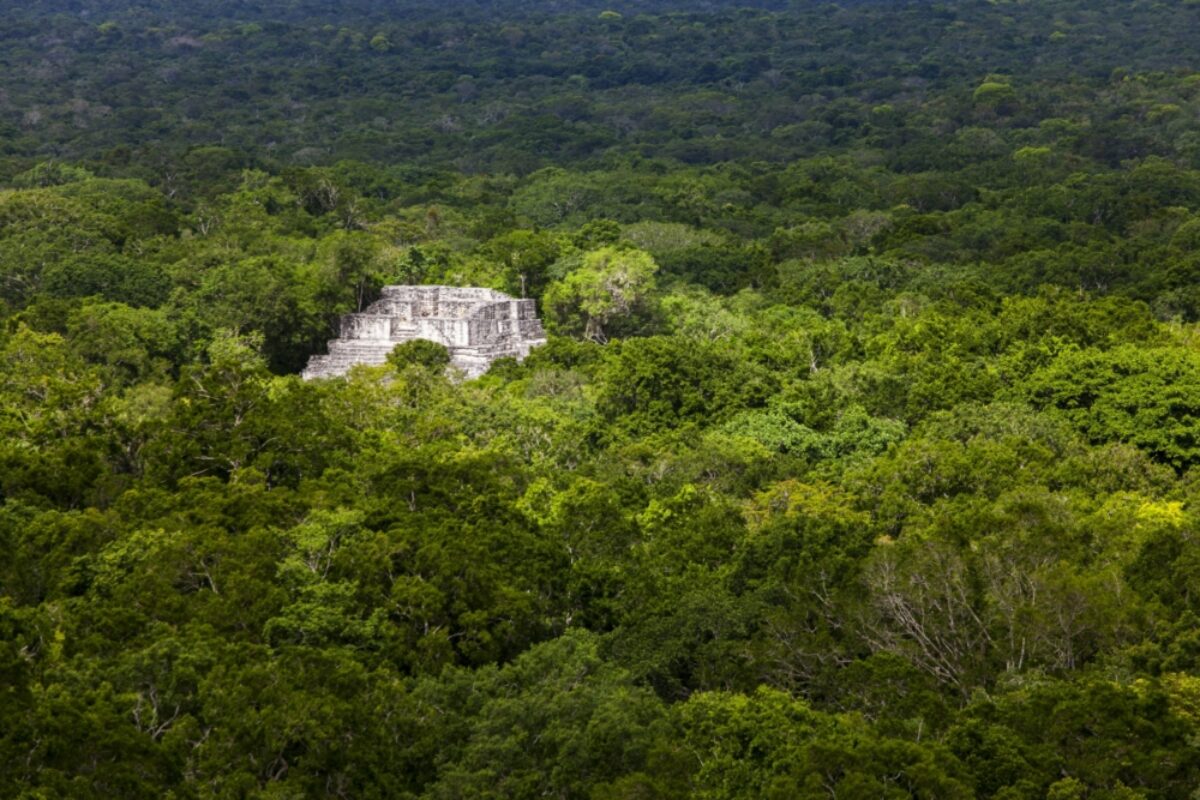
Calakmul, one of Mexico's many lesser-visited Maya sites
Lesser-visited sites
There are around 70 Maya sites open to the public, the majority of which are all but ignored by the mainstream tour buses. For those with longer to spend, or a deeper interest in the region's archaeology, here are a handful of Mexico's lesser-visited Maya sites.
Read more: Visiting Mexico's lesser-known Maya sites
How to visit Mexico’s Maya ruins
Day tours
Guided day tours departing on group tour buses from the Yucatan’s larger resort towns such as Cancun and Playa del Carmen are abundant and easy to book, either via your hotel or online. They are generally good value for money (usually starting at around $70/£50 per person) and include transport, a bilingual guide and sometimes entrance fees. Many tours offer optional extras, such as a buffet lunch or a trip to the nearby Ik Kil cenote, a sinkhole that was sacred to the Maya and is now a picturesque, if busy, spot for swimming.
The downside is that tour buses generally arrive at the archeological sites during peak hours, along with many other visitors. For those who want to arrive before the crowds or have more time at the sites (time is limited on group tours) private tours or a private driver are a better option. The private option is also preferable if you want to visit some of the smaller sites and don’t want to rent your own car.
Tour packages
Most multi-day tour itineraries to Mexico include the Yucatan Peninsula and at least Chichén Itzá, if not additional archeological sites. Depending on the tour you may be accompanied by your own private guide, or as part of a small group. Guides will be quality assured by the tour company, and entrance fees will be included. One week tours of the Yucatan can cost anything from $2,500 to $4,000+ depending on the tour type and choice of accommodation.
Self-drive
It is easy and relatively inexpensive to hire a car to explore the Yucatan. Prices start at around $15/£10 per day, but be sure to check what your insurance covers. The roads in the Yucatan are well paved and generally very safe and the area is well set up for tourism; sign-posting for the archeological sites is generally pretty good and there is usually the option of shaded parking at or near the entrance to the sites.
Self-drive allows you to visit cenotes (swimmable sinkholes) that are not frequented by the tourist coaches and to arrive at archeological sites before the crowds. You’re also free to stop wherever you like, and can avoid the more touristy restaurants frequented by the tour buses.
Public bus
For intrepid travellers, there are public buses that take passengers to or at least near to the archeological sites. Buses operated by ADO, the national bus company, are generally comfortable and air conditioned, while the standard local buses tend to be hotter and more crowded but a fun way to explore. Some grasp of Spanish would come in useful and on crowded local buses, it is worth taking extra care with your valuables and keeping expensive items out of view.
The best time to visit Mexico’s Maya ruins
You can visit the Yucatan Peninsula any time of year: tours, accommodations and other services are open year-round. The main factors to bear in mind are the weather and peak tourism periods.
When to visit Mexico's Maya sites
Best time to go: November, early December, January, February
High season: Easter (Semana Santa/Spring Break) and Christmas / New Year
Low season: June to October
Coolest temperatures: November to February
Hottest temperatures: March to May
Most rainfall: June to October
Climate and conditions
The Yucatan Peninsula has a tropical climate with consistently high temperatures throughout the year. There are essentially two seasons, the dry season (November-May) and the rainy season (June-October).
The coolest months are found between November and February with lows averaging around 1 °C (34 F) and average highs reaching around 30°C (86 F). This is a great time to visit the Peninsula and explore the Maya sites. The subtle drops in temperature make it far more comfortable to be out throughout the day and once the Christmas and New Year rush is over, there are fewer crowds. The winter months are also the best time to see the abundant flamingos in the Celestún Biosphere reserve on the north-western tip of the Yucatan.
If your preference is for hot weather, visit the Yucatan Peninsula between March and May. The hottest month is usually May, when temperatures average around 35°C (95 F) but can reach as high as 40°C (104 F), the fierce sun leaving locals ready for the rains to arrive. The heat of the summer months makes cenote dipping—swimming in the underground sinkholes—even more appealing, but can mean that exploring sites like Chichén Itzá, which has very little shade (although more trees are being planted to change that) very intense.
The Yucatan’s rainy season from June to October is hot and muggy with an average of around 13.5 rainy days per month. Expect humid heat during the day and rain in the afternoon. Temperatures don’t drop too much, though the rains certainly make it feel fresher and can come as welcome relief. Be aware that in coastal areas of the Yucatan, this is also hurricane season, with the highest risk running from August to October. If you are in the region during this time and want to take some time out from the archeological sites to enjoy the natural wonders, you can swim with majestic whale sharks as they pass through Mexico’s Caribbean waters in between June to September.
Peak tourism season
Peak tourism season is during Easter and the week leading up to it (a time referred to as Semana Santa which coincides with the US Spring Break vacation) as well as Christmas and New Year, when Mexicans flock to the beaches for their annual holidays. Prices usually rise upwards of 20% during those times. The time after Easter to the beginning of December is low-season and prices tend to decline, particularly during hurricane season.
Festivals and events
Merida comes to life with its aptly named Merida Fest during the first few weeks of January. The streets fill with displays of music, dance and theatre and the food is excellent. Merida Fest is a lovely way to immerse yourself in local Yucatec culture.
February and March is Carnaval season across the Yucatan, with events from Merida to Cancun. Carnaval celebrations involve concerts and colourful street parades full of music and dancing.
The coastal towns fill up again during Semana Santa (Holy Week/Easter) which coincides with Spring Break in the US and is therefore best avoided unless you are looking for 24-hour parties, crowded beaches and raucous nightclubs. Easter is also a very popular time for Mexican families to visit archaeological sites, so expect crowds and queues.
May sees a recreation of a sacred Maya journey by boat from Cozumel to the mainland in honour of the Goddess Ixchel. For Mayas, crossing the sea means entering Xibalba – a sacred, hidden underworld. Watch the thirty handmade canoes, each with a crew of between four and six people, make the 36-mile journey over the sea.
In late October and early November, Day of the Dead, known as Hanal Pixán among the Maya, is commemorated around the region. It is a wonderful time to visit and to experience lively festivals and parades or visit cemeteries where locals decorate graves to honour the dead.
Winter sees Christmas and New Year celebrations across the peninsula and an increase in crowds. Unless you are specifically coming to celebrate Christmas and New Year at the beach, you may want to avoid the largest tourist destinations at that time and explore inland to cities like Merida and Valladolid instead.

